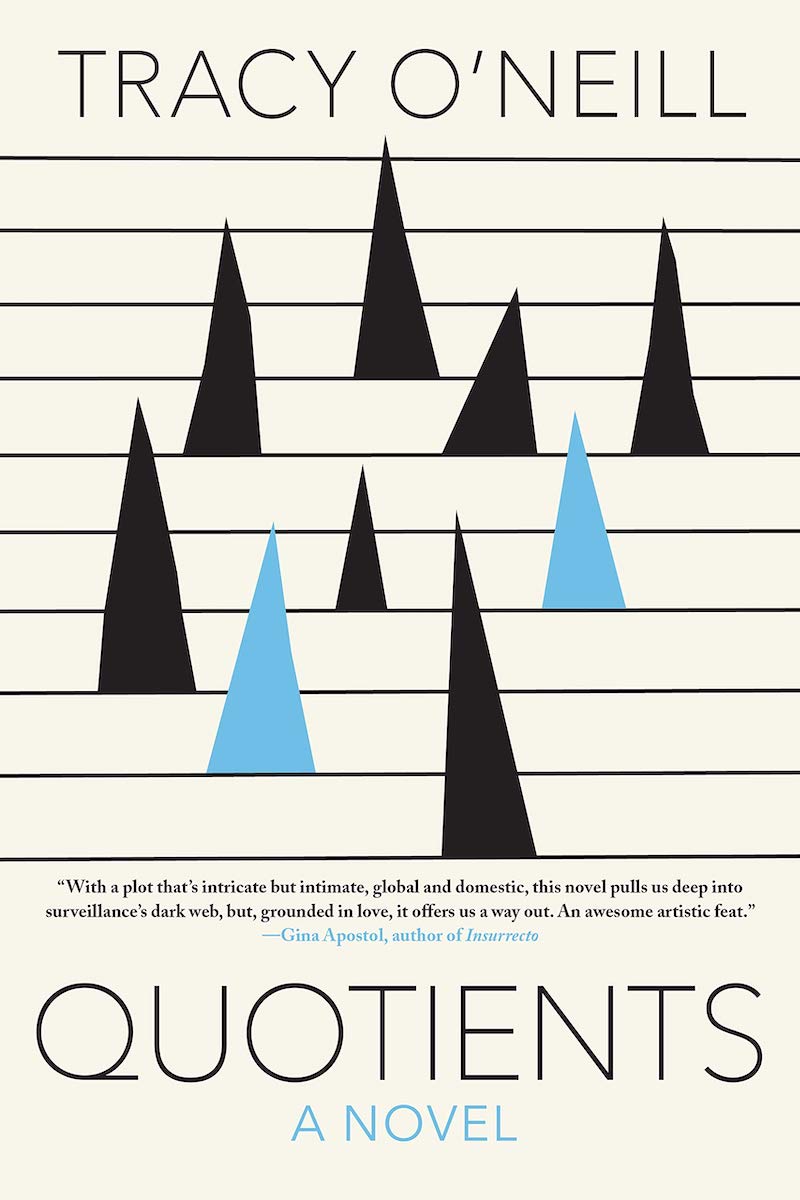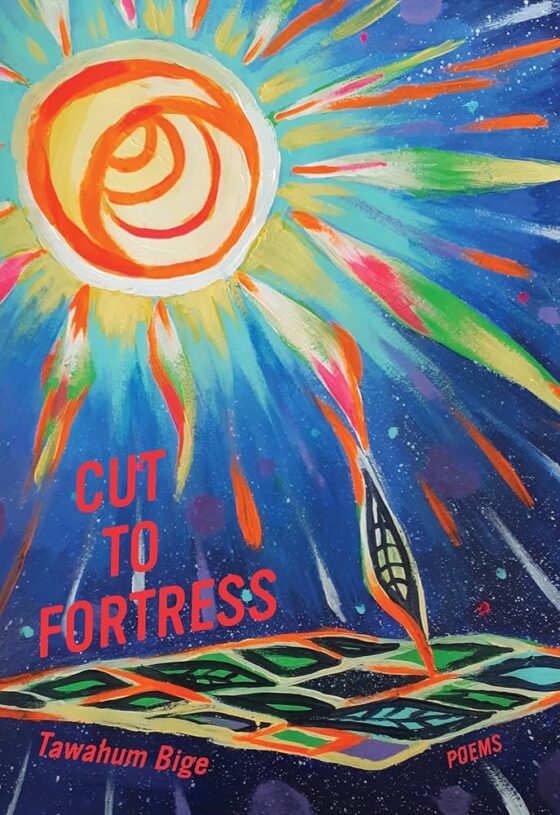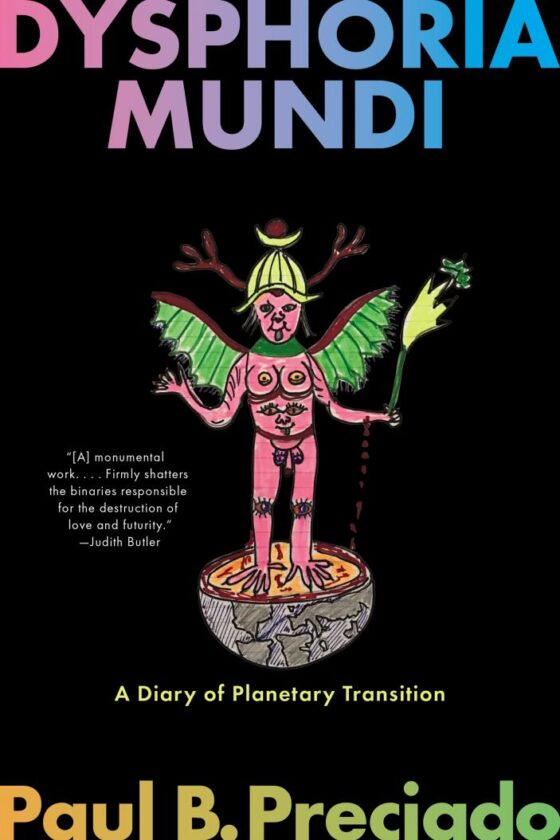
The Rumpus Book Club chats with Tracy O’Neill about her new novel, Quotients (Soho Press, May 2020), the extensive research she did while writing, how the book’s design came to be, using syntax as a way to affect the reader’s experience in time, and more.
This is an edited transcript of the book club discussion. Every month The Rumpus Book Club hosts a discussion online with the book club members and the author, and we post an edited version online as an interview. To become a member of the Rumpus Book Club, click here. Upcoming writers include Alysia Sawchyn, Lauren J. Sharkey, Matthew Salesses, Alison Stine, Beth Alvarado, Jenny Hval, Mattilda B. Sycamore, and more.
This Rumpus Book Club interview was edited by Marisa Siegel.
***
Marisa: Hi, and welcome to The Rumpus Book Club chat with Tracy O’Neill about her new novel, Quotients!
Tracy O’Neill: Hi, everyone! I’m happy to be here.
Marisa: Tracy, to kick us off, can you talk a bit about the genesis of Quotients? When did you start writing the novel, and what was its/your journey?
Tracy O’Neill: I started writing this book in 2015. At the time, I knew that I wanted to write a narrative about a former spy who struggles with intimacy and trust in the digital age, and I knew that this would recognize something about the way many of us feel today. At one point, this book was over six hundred pages. I edited it countless times.
Marisa: Was the writing process for Quotients different from the process for your first novel, The Hopeful? I always wonder if there is more—or less—pressure the second time around…
Tracy O’Neill: The wonderful thing about writing a novel is that it’s a preoccupation you carry through your life. I would see something or hear about something and understand it as related in theme to the book. I was building layers like a painter, washing them down, building them up, burnishing. This was a bit different than The Hopeful because The Hopeful’s narrator had a more claustrophobic focus. She is a young woman with blinders, rather than someone always listening to the world like many of the characters in Quotients.
If there was pressure, it was a pressure that I imposed on myself: do something different. Experiment. I wanted to branch out in my writerly moves.
Jessica Wu: Hi Tracy! What kind of research did you do for Quotients, and did you find that challenging?
Tracy O’Neill: Hi, Jessica! I did many different types of research. I read books about The Troubles in Northern Ireland, books about the NSA, books about hedge funds. I went to Northern Ireland to get a feel for Belfast and Lisburn, when those two places featured more prominently in the book. And all the while, I was doing a PhD, so I was reading scholarship about the ethics of big data. I took a class on military strategy with a guy from Brookings. All of this informed the novel.
map7880: Most unique and inventive book I’ve read in a long time. Did it follow you around constantly, or did you walk away and come back?
Tracy O’Neill: Hi, Map! It did follow me pretty constantly. There’s something that I call “writing in the back of your head.” There’s a way that I think when you really, really care about a long piece of creative prose, it is always churning in some part of your consciousness, hoping to assimilate more ideas or clarify its composition. You can be playing Candy Crush, and it’s there. Like a shadow inside yourself dancing mysteriously.
But I think the part of publishing that people rarely discuss is that there are many “breaks” in the writing process. You send it to your agent, then you wait to hear back about what they think. The book goes out on submission, then you wait to hear back about whether it will be acquired. You send it to your acquiring editor after revision, then you wait to hear back about what the acquiring editor thinks about your revision. So there is quite a bit of walking away, but I don’t think your mind looses its grip all the way even during these periods of waiting.
Marisa: The characters in Quotients intersect in varied and sometimes complicated ways. Did you have a process for charting these relationships out? And, is there a particular character who felt most central or came to you most easily? And, the opposite: one who was hardest to get on the page?
Tracy O’Neill: Here is an infuriating answer. I do have a pretty good technique for charting relationships out, which I developed and used while editing The Hopeful, but I did not use it for Quotients. I made a character table, with each character listed on the X and Y axes. Then I would write what sorts of conflicts they had with each other and why. For some reason, I did not do this with Quotients. I think I was more preoccupied by the timelines.
The character who came most easily to me is not one of the primary characters but Tyrell, the young boy. I think he is the most like me, a bit in his head, sometimes impulsive. But I really struggled with Alexandra, whose values are so outside of my own.
Marisa: That’s interesting to me, because Tyrell and Alexandra are probably the characters I felt most connected to when reading. Tyrell doesn’t appear until later on, and is sort of secondary to the plot, but his chapters are so vivid. And Alexandra felt like the center of the book, even while Jeremy felt like its protagonist/the thread I could most easily follow.
Tracy O’Neill: Interesting! The part about Alexandra that I connect with is wanting to keep her family safe. The part that was difficult to me was projecting into this person who valorizes normativity so much. I needed to marry her hopefulness to the family unit.
Jessica Wu: What was the editing process like, and what did you focus on as you whittled down your manuscript?
Tracy O’Neill: For me editing is something that happens every day when I write. I am looking back at pages I’ve already written, and constantly revising, revising. But in terms of the larger, structural revision, I had a bit of an assignment toward the end. My editor asked me to bring it down to about seventy-five percent of its length. So I doubled down on the sense that this story was like several narratives floating through the internet, not tied to time and space, and cut a great deal of the “mooring” details regarding setting and logistics. I tried to make each chapter a story-in-datum.
Marisa: How involved were you in the layout of the book: cover design, the formatting of chapters and sections, and so forth? (The book is beautiful.)
Tracy O’Neill: Thank you! I will admit to being a bit of a diva about the design. Initially, I was shown two covers. One is close to the cover I have now. However, I was not happy with the color. It was pink. I was given several other options, maybe nine. However, they were all pastel, and I did not think that this conveyed the feeling of the book. There was too much solace in the palette.
After that, I think options were shown to me again two or three more times. We landed on this one. I was very lucky that Soho Press was willing to listen to my ideas. That is highly unusual in the book world. Oh, and the inner design was perfect from the get. It is so special to look at a book and be proud of it as an aesthetic object, as well as for the work you’ve put into it. Jason Booher, its designer, is a genius.
map7880: Interesting how cover design can affect perception of a book. Pink or pastel would have projected a much different feeling.
Tracy O’Neill: It absolutely would have, and as odd as it may sound, I wanted to convey a bit of menace.
map7880: Success!
Marisa: I’m glad you got your way! The design seemed so intentional and suited to the story.
Tracy O’Neill: I am very fortunate—thank you, Soho and Jason, for your patience!
Sean PW: Hi Tracy! Can you tell us a little about the sentence work in the book? What did you do in the writing or editing process to sort of bend and finesse sentences in these fabulous and surprising ways?
Tracy O’Neill: Hi, Sean! I take sentences very seriously, and when I write, I am thinking about them not as whole pieces but as series of words unfurling through time. To me, syntax is a way to affect the reader’s experience in time. So I am often writing in slightly unusual syntax in part because I want people to slow down. I know many writers are looking to create a sense that you can fly through their books. People will often say they flew through a book as a compliment. But, I am interested in providing a different experience.
Sean PW: Right!
Tracy O’Neill: And in particular with this book, there was a guiding principle to this sentence work because this is a book that is in part about people trying to get a grasp of what’s happening, what the story is, who the agent is of action, what the verb is in their lives. So the “plot” of these sentences is often that the syntax must be parsed as the characters are attempting to parse the information of their lives.
Sean PW: Totally; that very much comes through.
Tracy O’Neill: Thank you!
Toward the end of the book, there’s a chapter that’s mostly anaphoric sentences that begin “It was the year.” That was one where the syntax was simpler because I did want there to be a faster transition sentence to sentence to give a sense of how it feels like one is being pelted by data, a little like being on the internet.
Marisa: What are the books, music, and other art that inform your writing, and/or Quotients in particular?
Tracy O’Neill: I know that I mentioned in my Letter in the Mail that I love the poet Robert Creeley’s book Pieces. I am a big DeLillo fan. I read Giovanni’s Room probably once a year. I’m interested in what Percival Everett is up to always. I love Nabokov. I love Iggy Pop, Kendrick Lamar, Patsy Cline… And there is no one cooler than Rei Kawakubo of Comme des Garçons. She talks about her designs being like riddles or koans. I hope there is a bit of that in my work, too.
Marisa: What are you reading now? Any new and forthcoming books you’re especially excited about?
Tracy O’Neill: I’ve been reading Days of Distraction by Alexandra Chang and New Waves by Kevin Nguyen. Each foregrounds technology in our social lives. I think that anyone who enjoys the work of Jenny Offill will like Days of Distraction immensely.
There’s a book coming out this year by a writer called Lucie Britsch, Sad Janet. She’s wonderfully weird, Saunders-esque.
Marisa: These are great recommendations!
One last question from me: what is it like to have a book come out right now, amid the COVID-19 crisis? Are you finding ways to celebrate the book about to be out in the world?
Tracy O’Neill: That’s a hard question. I’m very privileged. I’m healthy. I have been allowed to work from home. But I did defend my dissertation something like a week and a half ago, and the book will be out in something like a week and a half. I started both of these projects in 2015. They’re both five-year efforts. So sometimes I don’t know where to deposit my feelings, since I’m not socializing in the ways I’m accustomed.
I suppose that’s not a great answer!
Marisa: No, its! That’s such an honest answer.
Sean PW: Works for me.
Jessica Wu: Are you working on anything new?
Tracy O’Neill: I am kind of conceptualizing a novel idea. But the more substantive writing I’ve done recently is a personal essay that will come out soon on Catapult.
Marisa: Tracy, thank you so much for your time tonight! And thanks to everyone for the thoughtful questions, and for joining us!
Tracy O’Neill: Absolutely—this was really fun. Thank you so much for bringing me into the fold!
Marisa: Oh, you were already in! I hope this book makes its way into many readers’ hands. Have a good night, everyone, and be well!
***
Photograph of Tracy O’Neill by Oskar Miarka.






